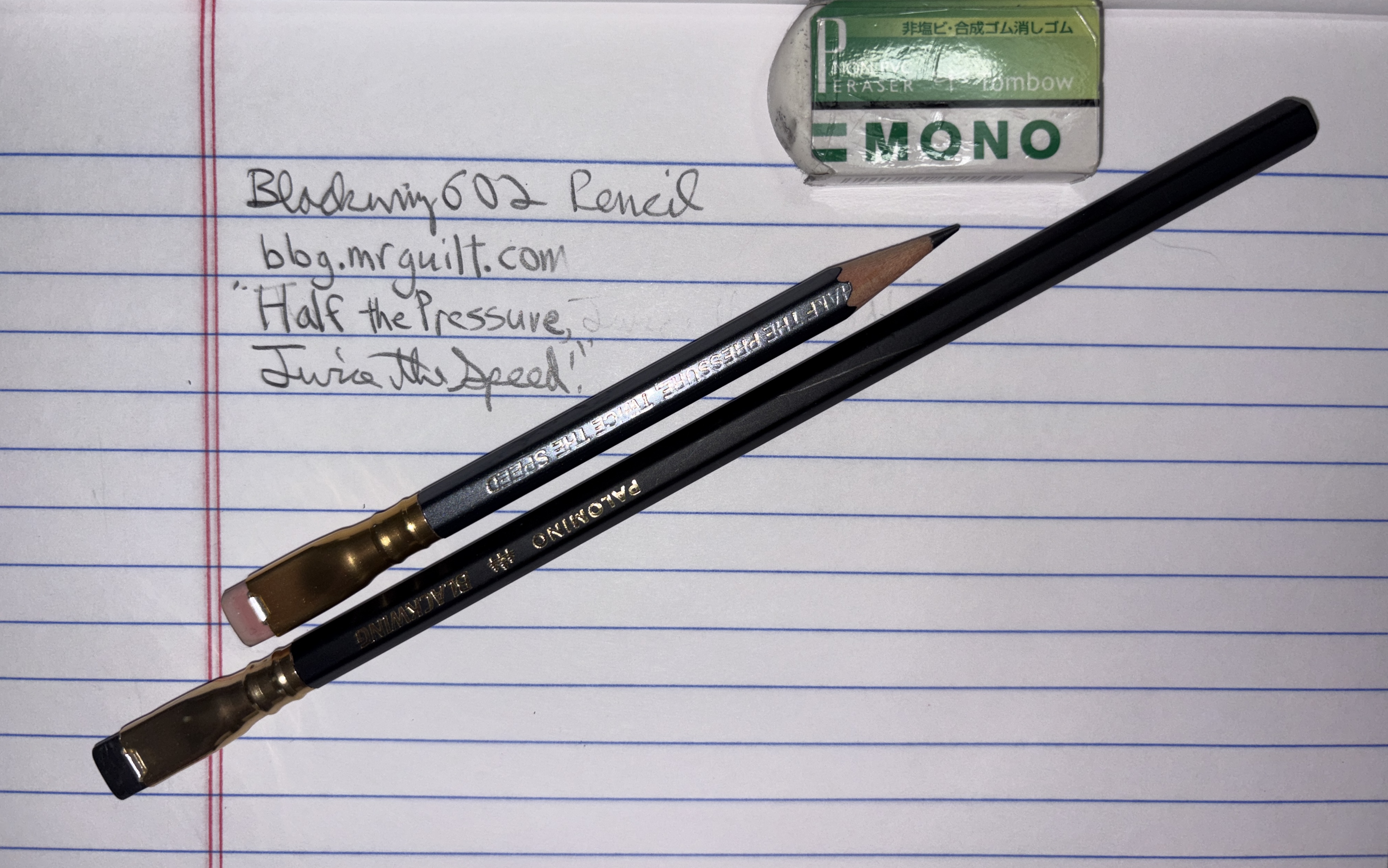I Hate That I Love Blackwing Pencils
There are some products that’s easy to hate on for their popularity. For instance, whatever the current trendy metal water bottle of the moment (Hydroflask, Stanley, etc.) seems to be an easy target for such ire.

For me, for a while, it was Blackwing pencils. A single woodcase pencil, at a typical-ish street price of $2, is nearly as much as a dozen in some stores. They had a cult following that, for a time, could command $40 each on eBay, and inspired a whole company to spin up to reproduce them. Even for a fountain pen collector, this seemed nuts. Could they really be that good.
I was primed to absolutely hate them.
The Brief History of the Blackwing 602
The Wikipedia Page can give you a deeper dive. The Wall Street Journal made a nice video explaining the rebirth. These offer a lot more information that I won’t repeat. But I feel a brief overview is worth mentioning for the sake of context.
The original Blackwing was produced from 1934 to 1998, originally by the Eberhard Faber Pencil company, then by the various companies that it merged with or bought the brand. It was originally marketed towards stenographers, sold with the motto “Half the Pressure, Twice the Speed” stamped to each pencils. However, it’s smooth, dark lines made it a fan of Disney animators, playwrights, and novelists. As time went on, it became a bit of a niche product within the company’s line. In 1998, the machine that made the ferrule, the part that held the eraser, broke. It was deemed not cost effective to repair the machine for such a small market, so the Blackwing was quietly discontinued, letting the remaining stock run out.
Remaining stock became a prized item. As I said, individual pencils were selling on eBay for $40. A company bought the name, and set out to bring the pencil back to life. They spent time developing a lead that came as close to the original’s. As Caroline Weaver, pencil historian, put it, “I wouldn’t call it a reproduction. I’d call it a tribute.” Now, they produce thousands of pencils, and release several limited editions each year.
So Just What Is a Blackwing 602
At its most basic, the Blackwing 602 is a woodcase pencil, meaning a piece of lead is encased in the middle of a wooden body. The wood is stripped away when it is sharpened, growing shorter until it is used up. This is opposed to a mechanical or drop-lead pencil, where a piece of lead inserted into a permanent body. Close your eyes, and imagine a “Number Two” pencil for the SATs: you’re imagining a round or hexagonal yellow body about six inches long, with a round eraser on top.
The most obvious difference in a Blackwing is the eraser: it is rectangular, and designed to be replaced over the life of the pencil. These days, I tend to use a block eraser, saving any built-in eraser for when I’m not at, say, my desk. The default 602 tends to be black, though its current manufacturer has come out with other designed—”limited editions.”
But what sets it apart is the lead. It produces a line that is the same as an HB (“#2”) pencil, but feels much softer. It simply feels nice and smooth to write with, and holds a tip rather well.
What Do I Really Think?
The office supply geek in me had to see what was driving this. The fact they had a long history and such a fan base intrigued me. Do they live up to the motto, “Half the Pressure, Twice the Speed?” Were they really that much better than any other woodcase pencil out there?
When I had the opportunity to buy a single piece, as opposed to a $32 dozen, I decided to try it, primed to hate it.
Instead, I found they delivered. It really is the best woodcase pencil I’ve ever used. I was a doubter until I tried one. But it really does require half the pressure, and feels as smooth as my nicest fountain pen. I really feel it represents a level difference from other woodcase pencils I’ve used. The wood and lacquer used in its production are clearly of high quality.
I don’t see myself as a regular consumer of Blackwings. I mostly write with fountain pens. When I need a pencil, I tend to reach for a mechanical pencil (most commonly a multipen with a pencil element). But I was glad to try them, and to be proven wrong. Sometimes, things get hype because they really are that good. After learning the history of the pencil, the office supply geek in me was very happy to see people trying to keep one of the legacy products alive for future generations.